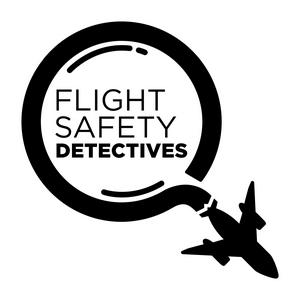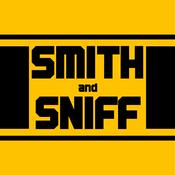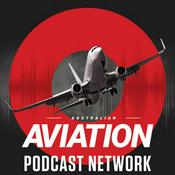307 episodes

Xyla Foxlin on Pilot Mental Health - Episode 307
17/12/2025 | 48 mins.
Guest Xyla Foxlin focuses on how the FAA and the aviation community can better support mental health issues faced by pilots and other aviation professionals. Foxlin is an engineer and pilot who produced an award-winning video about pilot mental health.Her aviation journey highlights include a Young Eagles flight that cemented her fascination with aviation, owning and maintaining a Cessna 140 that she has flown from coast to coast, a 2025 visit to Oshkosh and regaining her FAA medical certificate.Foxlin discusses efforts with the Pilot Mental Health Campaign (PMHC) to push the Pilot Mental Health in Aviation Act of 2025 through the House of Representatives. She and the PMHC continue to educate the general public on the need to reform how pilot mental health issues are handled. In her personal story, Foxlin had to regain her medical certification and ability to fly after disclosing past mental health-related medical treatments. In the current FAA medical certification system, a significant percentage of pilots hide mental health conditions or avoid treatment entirely because of concern that their medical certification and their livelihood can be taken away.Greg Feith, John Goglia, and Todd Curtis share the breadth of aviation-related mental health concerns, including investigators who may be affected by their work, mechanics who committed suicide or were at risk for committing suicide after an aircraft accident, and the trauma that an entire community may face after a major plane crash. Don’t miss what’s to come from the Flight Safety Detectives - subscribe to the Flight Safety Detectives YouTube channel, listen at your favorite podcast service and visit the Flight Safety Detectives website. Want to go deeper with the Flight Safety Detectives? Join our YouTube Membership program for exclusive perks like members-only live streams and Q&As and early access to episodes. Your membership support directly helps John, Greg and Todd to deliver expert insights into aviation safety.Interested in partnering with us? Sponsorship opportunities are available—brand mentions, episode integrations, and dedicated segments are just a few of the options. Flight Safety Detectives offers a direct connection with an engaged audience passionate about aviation and safety. Reach out to [email protected]. Music: “Inspirational Sports” license ASLC-22B89B29-052322DDB8 Hosted by Simplecast, an AdsWizz company. See pcm.adswizz.com for information about our collection and use of personal data for advertising.

UPS Crash Updates, Basic Med Clarified, Mental Health in Aviation - Episode 306
10/12/2025 | 45 mins.
This recording of a live stream on November 26 gives additional insights and updates into recent issues in aviation safety. Todd Curtis, Greg Feith and John Goglia tackle viewer questions to correct mistakes and dig deeper into current accidents and incidents.Hear more about:Politics and aviation safetyBasic Med rulesThe Mental Health in Aviation Act of 2025How a ramp worker was able to steal an airplane in broad daylight Don’t miss what’s to come from the Flight Safety Detectives - subscribe to the Flight Safety Detectives YouTube channel, listen at your favorite podcast service and visit the Flight Safety Detectives website. Want to go deeper with the Flight Safety Detectives? Join our YouTube Membership program for exclusive perks like members-only live streams and Q&As and early access to episodes. Your membership support directly helps John, Greg and Todd to deliver expert insights into aviation safety.Interested in partnering with us? Sponsorship opportunities are available—brand mentions, episode integrations, and dedicated segments are just a few of the options. Flight Safety Detectives offers a direct connection with an engaged audience passionate about aviation and safety. Reach out to [email protected]. Music: “Inspirational Sports” license ASLC-22B89B29-052322DDB8 Hosted by Simplecast, an AdsWizz company. See pcm.adswizz.com for information about our collection and use of personal data for advertising.

Examining a Rash of Endeavor CRJ Ground Collisions - Episode 305
03/12/2025 | 31 mins.
Take a deep dive into the NTSB preliminary report of what happened when a taxiing Delta A350 struck and substantially damaged an Endeavor CRJ in Atlanta. Greg Feith, John Goglia and Todd Curtis examine the contributing factors, including crew distractions, limited visibility of the wingtip from the cockpit, and the layout of the taxiways.This event was one of three incidents involving Endeavor Airlines CRJs in a little over a year. Two Endeavor Airlines CRJ aircraft collided on the ground at LaGuardia Airport in New York in October. There was also a crash during landing of an Endeavor CRJ in Toronto in February.Greg calls attention to issues that could lead to operational incidents at Endeavor, including operation discipline and crew qualifications. However, there does not seem to be a common issue in the three events.Collision risk during taxiing is a concern for the maintenance community, some of whom taxi aircraft at airports. Taxiing aircraft is preferred over towing at some congested airports. John shares that during his career he did not receive any briefings or training in the hazardous areas of the airport for taxiing aircraft. Todd and Greg say that maintenance personnel would benefit from practicing taxi techniques in a simulator. Don’t miss what’s to come from the Flight Safety Detectives - subscribe to the Flight Safety Detectives YouTube channel, listen at your favorite podcast service and visit the Flight Safety Detectives website. Want to go deeper with the Flight Safety Detectives? Join our YouTube Membership program for exclusive perks like members-only live streams and Q&As and early access to episodes. Your membership support directly helps John, Greg and Todd to deliver expert insights into aviation safety.Interested in partnering with us? Sponsorship opportunities are available—brand mentions, episode integrations, and dedicated segments are just a few of the options. Flight Safety Detectives offers a direct connection with an engaged audience passionate about aviation and safety. Reach out to [email protected]. Music: “Inspirational Sports” license ASLC-22B89B29-052322DDB8 Hosted by Simplecast, an AdsWizz company. See pcm.adswizz.com for information about our collection and use of personal data for advertising.

Digging Into the Data on Aviation Risks - Episode 304
26/11/2025 | 1h 1 mins.
The perception of aviation safety risk is much higher than the actual data. Safety data expert Mike Borfitz helps John Goglia and Todd Curtis look at how misleading data is used to support misleading theories about the Air India 787 and other high-profile aviation disasters.John and Mike highlight issues with reporting and documents related to the Air India accident. Learn the inside story on why some official-looking reports are inaccurate. Todd and Mike and both former Boeing engineers who used aviation data to analyze risk and support the manufacturing process. They discuss how Boeing and Airbus use data today to improve design and operations. They also examine the roles that manufacturers and the FAA play in certifying airplanes. The FAA relies on manufacturers and airlines to determine if an aircraft meets certification and airworthiness requirements.Tune in for updates on the commercial space industry and the future of the advanced air mobility side of aviation. Don’t miss what’s to come from the Flight Safety Detectives - subscribe to the Flight Safety Detectives YouTube channel, listen at your favorite podcast service and visit the Flight Safety Detectives website. Want to go deeper with the Flight Safety Detectives? Join our YouTube Membership program for exclusive perks like members-only live streams and Q&As and early access to episodes. Your membership support directly helps John, Greg and Todd to deliver expert insights into aviation safety.Interested in partnering with us? Sponsorship opportunities are available—brand mentions, episode integrations, and dedicated segments are just a few of the options. Flight Safety Detectives offers a direct connection with an engaged audience passionate about aviation and safety. Reach out to [email protected]. Music: “Inspirational Sports” license ASLC-22B89B29-052322DDB8 Hosted by Simplecast, an AdsWizz company. See pcm.adswizz.com for information about our collection and use of personal data for advertising.

UPS Crash Facts Examined - Episode 303
26/11/2025 | 55 mins.
A look at the facts provided in the NTSB preliminary accident report on the November 4, 2025, crash of a UPS MD-11F in Louisville, Kentucky. John Goglia, Todd Curtis and Greg Feith share their insider perspectives as they examine the details of this fatal plane crash.Many online commentators have speculated on the cause of the crash and other details of the accident, only to be proven wrong by the facts provided by the NTSB. The accident has similar circumstances to the 1979 crash of an American Airlines DC-10 in Chicago. What is very different is the prevalence of recoding devices as well as the tools available to citizen journalists and professional media alike. Major accidents have always attracted media attention, but John’s experiences lead him to conclude that the quality of the reporters from that era was better than reporters from today's large media outlets. Video evidence is now often immediately available after an event, which helps investigators in the early phases of an investigation. Greg shares the process he used to make requests for photos and videos during investigations while at the NTSB. Greg and Todd review the preliminary report in detail. They point out that video evidence shows the aircraft began to have catastrophic problems at takeoff, limiting options available to the crew. They detail how the accident unfolded based on information in the preliminary report and witness video evidence.The preliminary report includes a lot of information about the strut that attaches to the engine. Cracks in the engine mount are a focus of the continuing investigation.The FAA has issued two emergency Airworthiness Directives that grounded all DC-10s and MD-11s in the U.S. Greg ends the show discussing the various options the operators have for repairing, inspecting, replacing parts or, if the required changes are significant, replacing the aircraft. Don’t miss what’s to come from the Flight Safety Detectives - subscribe to the Flight Safety Detectives YouTube channel, listen at your favorite podcast service and visit the Flight Safety Detectives website. Want to go deeper with the Flight Safety Detectives? Join our YouTube Membership program for exclusive perks like members-only live streams and Q&As and early access to episodes. Your membership support directly helps John, Greg and Todd to deliver expert insights into aviation safety.Interested in partnering with us? Sponsorship opportunities are available—brand mentions, episode integrations, and dedicated segments are just a few of the options. Flight Safety Detectives offers a direct connection with an engaged audience passionate about aviation and safety. Reach out to [email protected]. Music: “Inspirational Sports” license ASLC-22B89B29-052322DDB8 Hosted by Simplecast, an AdsWizz company. See pcm.adswizz.com for information about our collection and use of personal data for advertising.
More Leisure podcasts
Trending Leisure podcasts
About Flight Safety Detectives
Listen to Flight Safety Detectives, 思文,败类 and many other podcasts from around the world with the radio.net app

Get the free radio.net app
- Stations and podcasts to bookmark
- Stream via Wi-Fi or Bluetooth
- Supports Carplay & Android Auto
- Many other app features
Get the free radio.net app
- Stations and podcasts to bookmark
- Stream via Wi-Fi or Bluetooth
- Supports Carplay & Android Auto
- Many other app features


Flight Safety Detectives
download the app,
start listening.

































